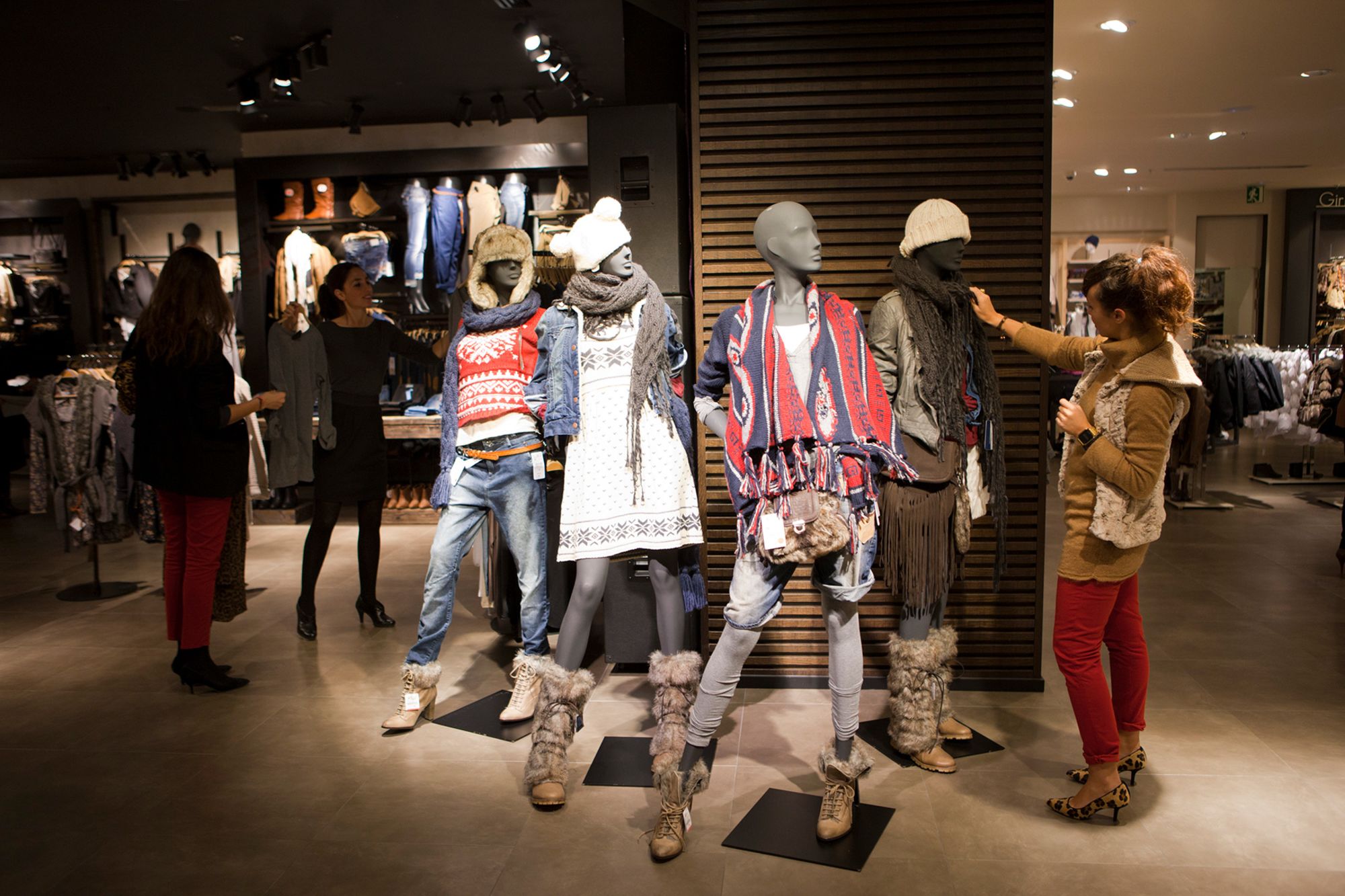Fast Fashion Industry: Insights into Supply Chain Optimization and Cost Efficiency by 2028 | TechSci Research
According to TechSci Research report, “Global Fast Fashion Market – Industry Size, Share, Trends, Competition Forecast & Opportunities, 2028”, the Global Fast Fashion Market stood at USD 39.91 billion in 2023 and is anticipated to grow with a CAGR of 16.5% in the forecast period, 2025-2029. Creating a comprehensive overview of the global fast fashion market involves exploring various facets, from its inception and evolution to its impact on the industry, society, and environment. Fast fashion, a phenomenon that emerged in the late 20th century, revolutionized the apparel industry by offering affordable, trendy clothing produced at rapid speeds. This market segment has witnessed exponential growth, reshaping consumer behavior, supply chains, and the very essence of fashion itself.
The origins of fast fashion can be traced back to the 1980s and 1990s when retailers began adopting strategies aimed at reducing production cycles and responding swiftly to emerging fashion trends. Brands like Zara, H&M, and Forever 21 pioneered this model, streamlining their operations to quickly replicate runway styles and deliver them to consumers at accessible prices. This shift marked a departure from traditional fashion cycles, where trends emerged seasonally and took months to reach the masses.Browse over 26 market data Figures spread through 181 Pages and an in-depth TOC on “Global Fast Fashion Market” – https://www.techsciresearch.com/report/fast-fashion-market/21207.htmlCentral to the fast fashion paradigm is the concept of “cheap chic.” It involves producing garments inexpensively, allowing consumers to purchase a wide array of trendy items without breaking the bank. This affordability, coupled with the allure of constantly changing styles, fueled the market’s growth, attracting a broad demographic of fashion-conscious consumers globally.The global fast fashion market’s expansion was facilitated by globalization, enabling brands to outsource manufacturing to countries with lower labor costs and streamlined production processes. Countries in Asia, particularly China, Bangladesh, Vietnam, and India, emerged as key manufacturing hubs, leveraging their abundant labor force and infrastructure to meet the industry’s demand for quick turnarounds.The proliferation of digital technology and social media further accelerated the fast fashion phenomenon. E-commerce platforms allowed brands to reach a wider audience, while social media became a powerful tool for marketing and trend propagation. Influencers and celebrities showcased fast fashion items, driving consumer interest and creating a culture of instant gratification, where trends circulated swiftly.However, the rapid growth of the fast fashion market has raised concerns regarding its sustainability and ethical implications. The industry’s emphasis on speed and low-cost production often leads to environmental degradation, excessive waste, and exploitation of labor in some regions. The massive consumption of cheaply made clothing contributes significantly to pollution, with vast amounts of textile waste ending up in landfillsConscious consumerism and sustainability movements have prompted a shift in consumer attitudes. Many individuals now seek transparency, ethical sourcing, and eco-friendly practices from fashion brands. This shift has compelled some companies to reevaluate their strategies, incorporating sustainable materials, ethical manufacturing practices, and recycling initiatives into their operations.Moreover, the COVID-19 pandemic disrupted the fast fashion ecosystem, exposing vulnerabilities within its supply chains. Lockdowns, factory closures, and shifting consumer priorities led to inventory pile-ups and supply chain disruptions, prompting brands to reassess their strategies and adopt more resilient and flexible approaches. The global fast fashion market is segmented into type, end user, distribution channel, and region.Based on type, the clothing segment has asserted its dominance in the global fast fashion market. The clothing segment’s dominance within the fast fashion market is underpinned by several key factors. Primarily, clothing represents the core essence of fashion consumption, serving as the primary canvas through which individuals express their style and identity. This fundamental human need for clothing, combined with the allure of trendy, budget-friendly options, propels the clothing sector to the forefront of the fast fashion phenomenon. The segment’s ability to swiftly replicate runway trends and adapt them into affordable garments has cemented its place as the pinnacle of fast fashion. Brands specializing in clothing swiftly respond to evolving fashion trends, rapidly producing and distributing garments that mirror high-end designs, enabling consumers to embody the latest styles without the premium price tags.Moreover, the sheer diversity encompassed within the clothing segment contributes significantly to its dominance in the fast fashion market. From casual wear to formal attire, athleisure to haute couture-inspired pieces, the spectrum of clothing offerings caters to a broad spectrum of consumer preferences and occasions. This versatility ensures that the clothing segment remains at the forefront of consumers’ minds, constantly influencing their purchasing decisions.Based on region, Asia Pacific holds a significant position in the global fast fashion market. One of the region’s key strengths lies in its robust manufacturing capabilities. Countries within Asia Pacific, such as China, Bangladesh, Vietnam, India, and others, have emerged as central hubs for fast fashion production. These nations boast well-established textile industries, skilled labor forces, and infrastructural frameworks that facilitate the rapid and cost-effective production of clothing, meeting the ever-growing demand for fast fashion items globally. Moreover, the Asia Pacific region hosts a burgeoning population characterized by a burgeoning middle class with increasing purchasing power. This demographic shift has significantly influenced consumer behavior, fostering a culture of fashion-consciousness and a penchant for affordable yet stylish clothing. The region’s consumers are quick adopters of new trends, propelling the demand for fast fashion products.Major companies operating in global Fast Fashion market are:Bershka (Inditex)River IslandMissguidedBoohooNasty GalMiss Selfridge (Arcadia)Charlotte RusseCotton OnNew LookFashion NovaDownload Free Sample Report – https://www.techsciresearch.com/sample-report.aspx?cid=21207Customers can also request for 10% free customization on this report.“The global fast fashion market has reshaped the fashion industry, consumer behavior, and global supply chains. While it continues to evolve and thrive, the industry faces critical challenges concerning sustainability, ethical practices, and the need for greater accountability. As consumer awareness grows and demands for responsible fashion increase, the future of fast fashion will likely see a paradigm shift towards more sustainable, ethical, and transparent practices, fostering a more conscientious approach to clothing consumption.” said Mr. Karan Chechi, Research Director with TechSci Research, a research-based management consulting firm.“Fast Fashion Market – Global Industry Size, Share, Trends, Opportunity, and Forecast, Segmented By Type (Clothing, Footwear, Accessories, Others), By End User (Men, Women, Children, Unisex), By Distribution Channel (Online, Offline), By Region, By Competition, 2019-2029, has evaluated the future growth potential of global fast fashion market and provides statistics & information on market size, structure and future market growth. The report intends to provide cutting-edge market intelligence and help decision makers take sound investment decisions. Besides, the report also identifies and analyzes the emerging trends along with essential drivers, challenges, and opportunities in the global fast fashion market.Download Free Sample Report – https://www.techsciresearch.com/sample-report.aspx?cid=21207Contact Us-TechSci Research LLC420 Lexington Avenue, Suite 300,New York, United States- 10170M: +13322586602Email: sales@techsciresearch.comWebsite: www.techsciresearch.com
The global fast fashion market is segmented into type, end user, distribution channel, and region.Based on type, the clothing segment has asserted its dominance in the global fast fashion market. The clothing segment’s dominance within the fast fashion market is underpinned by several key factors. Primarily, clothing represents the core essence of fashion consumption, serving as the primary canvas through which individuals express their style and identity. This fundamental human need for clothing, combined with the allure of trendy, budget-friendly options, propels the clothing sector to the forefront of the fast fashion phenomenon. The segment’s ability to swiftly replicate runway trends and adapt them into affordable garments has cemented its place as the pinnacle of fast fashion. Brands specializing in clothing swiftly respond to evolving fashion trends, rapidly producing and distributing garments that mirror high-end designs, enabling consumers to embody the latest styles without the premium price tags.Moreover, the sheer diversity encompassed within the clothing segment contributes significantly to its dominance in the fast fashion market. From casual wear to formal attire, athleisure to haute couture-inspired pieces, the spectrum of clothing offerings caters to a broad spectrum of consumer preferences and occasions. This versatility ensures that the clothing segment remains at the forefront of consumers’ minds, constantly influencing their purchasing decisions.Based on region, Asia Pacific holds a significant position in the global fast fashion market. One of the region’s key strengths lies in its robust manufacturing capabilities. Countries within Asia Pacific, such as China, Bangladesh, Vietnam, India, and others, have emerged as central hubs for fast fashion production. These nations boast well-established textile industries, skilled labor forces, and infrastructural frameworks that facilitate the rapid and cost-effective production of clothing, meeting the ever-growing demand for fast fashion items globally. Moreover, the Asia Pacific region hosts a burgeoning population characterized by a burgeoning middle class with increasing purchasing power. This demographic shift has significantly influenced consumer behavior, fostering a culture of fashion-consciousness and a penchant for affordable yet stylish clothing. The region’s consumers are quick adopters of new trends, propelling the demand for fast fashion products.Major companies operating in global Fast Fashion market are:Bershka (Inditex)River IslandMissguidedBoohooNasty GalMiss Selfridge (Arcadia)Charlotte RusseCotton OnNew LookFashion NovaDownload Free Sample Report – https://www.techsciresearch.com/sample-report.aspx?cid=21207Customers can also request for 10% free customization on this report.“The global fast fashion market has reshaped the fashion industry, consumer behavior, and global supply chains. While it continues to evolve and thrive, the industry faces critical challenges concerning sustainability, ethical practices, and the need for greater accountability. As consumer awareness grows and demands for responsible fashion increase, the future of fast fashion will likely see a paradigm shift towards more sustainable, ethical, and transparent practices, fostering a more conscientious approach to clothing consumption.” said Mr. Karan Chechi, Research Director with TechSci Research, a research-based management consulting firm.“Fast Fashion Market – Global Industry Size, Share, Trends, Opportunity, and Forecast, Segmented By Type (Clothing, Footwear, Accessories, Others), By End User (Men, Women, Children, Unisex), By Distribution Channel (Online, Offline), By Region, By Competition, 2019-2029, has evaluated the future growth potential of global fast fashion market and provides statistics & information on market size, structure and future market growth. The report intends to provide cutting-edge market intelligence and help decision makers take sound investment decisions. Besides, the report also identifies and analyzes the emerging trends along with essential drivers, challenges, and opportunities in the global fast fashion market.Download Free Sample Report – https://www.techsciresearch.com/sample-report.aspx?cid=21207Contact Us-TechSci Research LLC420 Lexington Avenue, Suite 300,New York, United States- 10170M: +13322586602Email: sales@techsciresearch.comWebsite: www.techsciresearch.com




